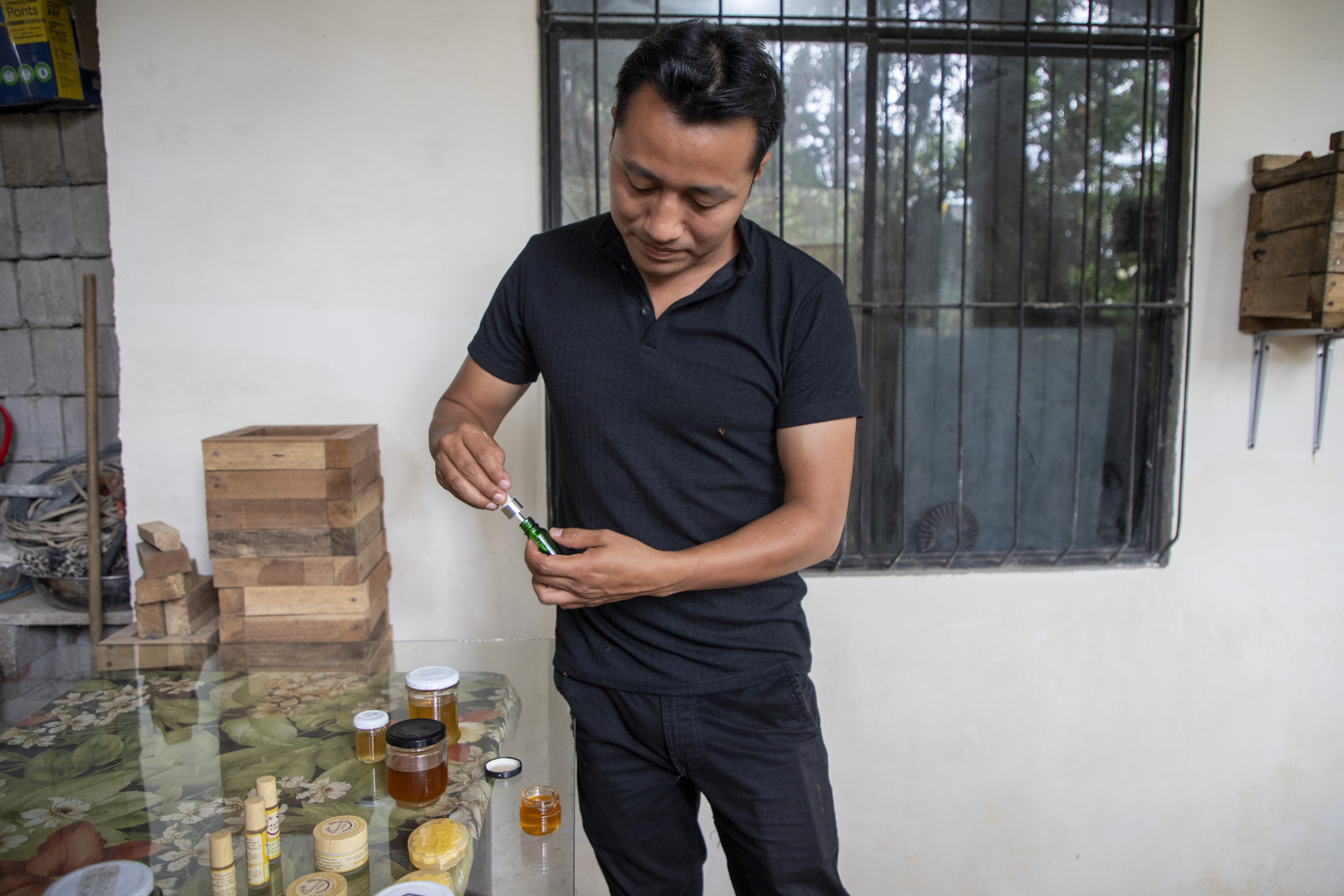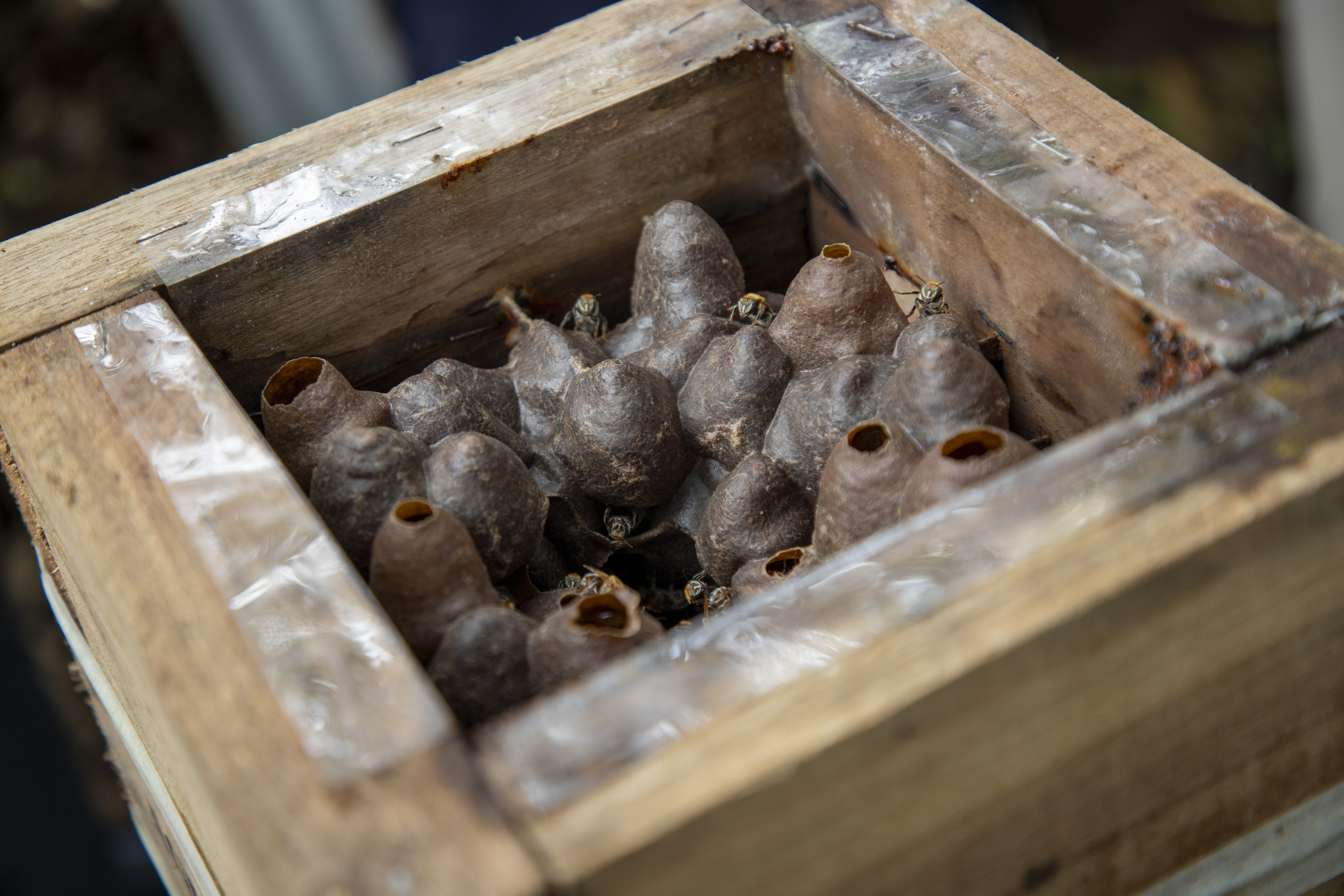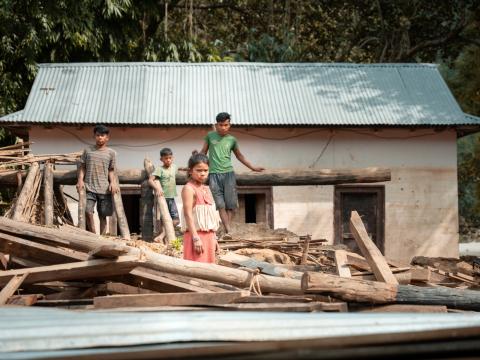
Can Bees Save the Amazon’s Children? What I’ve Learned from the Smallest Wings of Hope
Can Bees Save the Amazon’s Children? What I’ve Learned from the Smallest Wings of Hope
Esteban Lasso shares how native stingless bees in Ecuador’s Amazon are doing far more than making honey they’re transforming lives, restoring dignity, and redefining what sustainable development truly means.
3 November 2025.
I have worked in humanitarian and development work long enough to recognise when a project is merely working and when it is transforming. What’s happening deep in Ecuador’s Amazon falls, without question, into the latter.
There, in a country where 70,3% of rural families live below the poverty line, a quiet revolution is taking place. It’s not led by global experts or sophisticated technology, but by young people and the delicate hum of native stingless bees.
The practice, known as meliponiculture, may sound modest. Yet, as I have witnessed firsthand, its impact is profound. These bees tiny, stingless, often overlooked are reshaping how families feed their children, preserve their forests, and reclaim their dignity.

A Tradition Becomes a Movement
Not long ago, I visited a small community where I met Jeferson, a 29-year-old who embodies the promise of this new generation. Together with his partner, Aide, he has turned a simple patch of forest into a vibrant sanctuary buzzing with life and purpose.
“At first, it was just something my grandparents did,” he told me, holding one of his handcrafted hives with surprising gentleness. “But now we know these bees are life. They give us medicine, income, and, most importantly, they teach our children that if we protect the bees, the forest protects us.”
It’s a striking philosophy one that captures more truth than most policy frameworks I’ve seen. Through his initiative, Jeferson has inspired over 200 families to host melipona hives, producing honey both for their tables and for sale. Each hive is a small act of defiance against hunger, a quiet commitment to regeneration over extraction.

What Sustainability Really Looks Like
We often talk about sustainability in abstract terms strategies, frameworks, indicators. But in places like the Amazon, sustainability has a face, a heartbeat, and sometimes, a pair of tiny wings.
Meliponiculture is, to my mind, a rare kind of intervention: technically viable, economically sound, culturally rooted, and environmentally regenerative. It provides income without destroying ecosystems; it strengthens food security while preserving biodiversity. Families who once faced malnutrition are now producing honey rich in nutrients, pollen with medicinal properties, and propolis sought in global markets.
It’s an elegant model simple, scalable, and sustainable in the truest sense. But more than that, it restores pride. It tells communities that their heritage is not a barrier to progress but its foundation.
Rethinking How We “Do” Development
To a certain extent, the success of this approach challenges all of us working in the humanitarian and development sectors. It forces us to confront an uncomfortable truth: we’ve spent decades treating local knowledge as secondary something to be “integrated” rather than led by.
While persuasive, the traditional aid model often overlooks what’s right in front of us: communities who already hold the solutions, waiting only for recognition and support.
That’s why, at World Vision Ecuador, our work in the Amazon isn’t about delivering aid, it’s about restoring agency. We don’t see meliponiculture as charity; we see it as strategy. It’s part of a wider ecosystem of community tourism, sustainable agriculture, and artisan livelihoods that redefine what rural prosperity can look like.
Because ultimately, the question is not how to help, but how to get out of the way and let communities lead.
The Sound of the Future
When I hear the soft buzz of bees in a meliponary, I don’t just hear nature at work. I hear the murmur of change of young people building futures that are both economically viable and ecologically sound.
I’ve seen children tracing the architecture of a hive with their small fingers, listening as Jeferson explains how the colony survives through balance and cooperation. It’s a biology lesson, yes but also a moral one. A reminder that the forest, much like humanity, thrives only when every part sustains the whole.
To policymakers, governments, and development partners, I would say this:
When we treat nature as something we can take for granted, the cost is never distant; it spreads through the entire web of life disrupting ecosystems, livelihoods, and the fragile balance that sustains us all. The solutions to hunger, poverty, and environmental loss are not always found in new technologies or external expertise.
The Amazon doesn’t need saving. It needs listening, investment, and respect.
So, can bees save the Amazon’s children? Perhaps not alone. But they can certainly show us how to.
And that, to me, is the sound of hope.
Esteban Lasso Peña, is World Vision’s Country Director in Ecuador, with over thirty-two years of experience in international development. Throughout his career, Esteban has built strong partnerships and led programmes that improve the wellbeing of children and families in vulnerable contexts. His extensive expertise in development, diplomacy, and media engagement has helped drive lasting impact and strengthened collaboration across sectors to advance opportunities for children.

